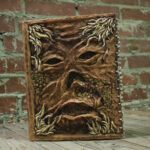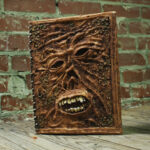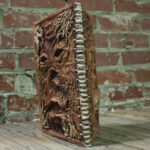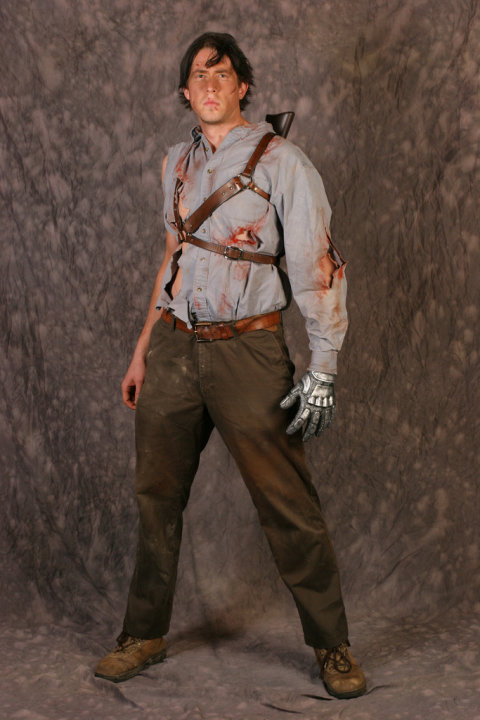![]()
A project I have long wanted to tackle is the Necronomicon. I have always been attracted to the idea of spell spell books, ancient tomes full of secrets, dark illustrations, and the forbidden. And what better tome than the Necronomicon itself?
I wanted to make it look as if it had been covered in the flesh and bones of people and animals. I even added some slimy creepy crawlies on the back as if it was still decomposing. Or maybe caught in a suspended form of half rotting and pain. This of course made me ponder why I am attracted to this sort of dark stuff, but then I decided that is a rabbit hole best not delved into.
Necronomicon – The beginning sculpt
These days most everything I sculpt is using Monster Clay. It is super easy to work with. I normally heat it up under a normal light bulb, which gets it just pliable enough to do everything I need.
I laid out the basic size (just big enough to fit a standard 8.5×11 sketchbook) and started tossing down clay.
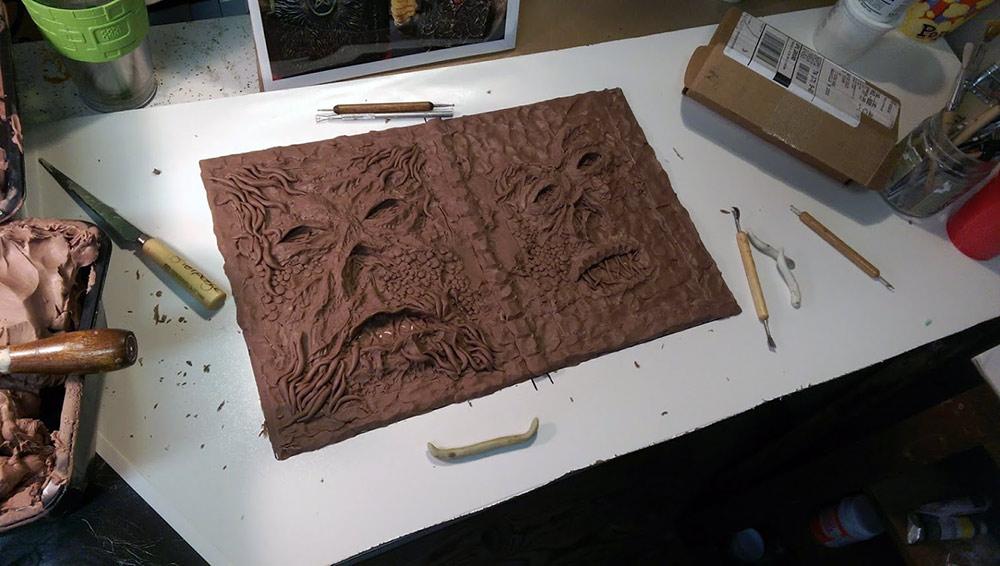
There was a long pause between the start of the sculpt and the molding, but after a couple of month, I got in all the products from Smooth on and made some molds.
Next was to cast it in latex and start painting!
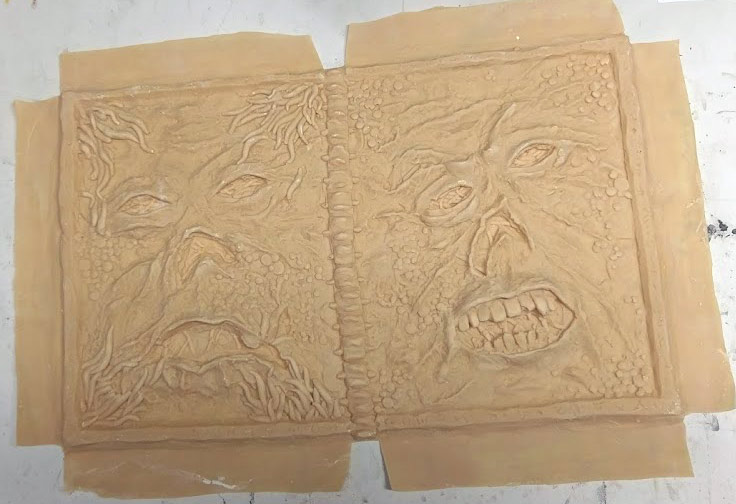
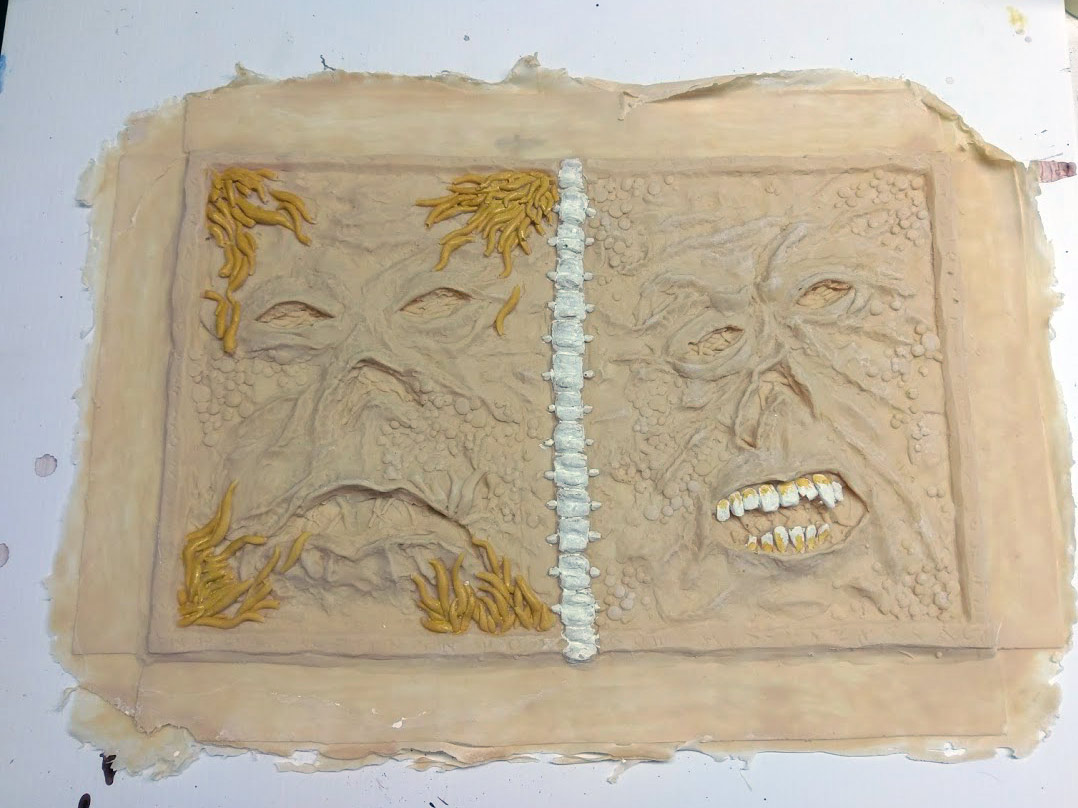
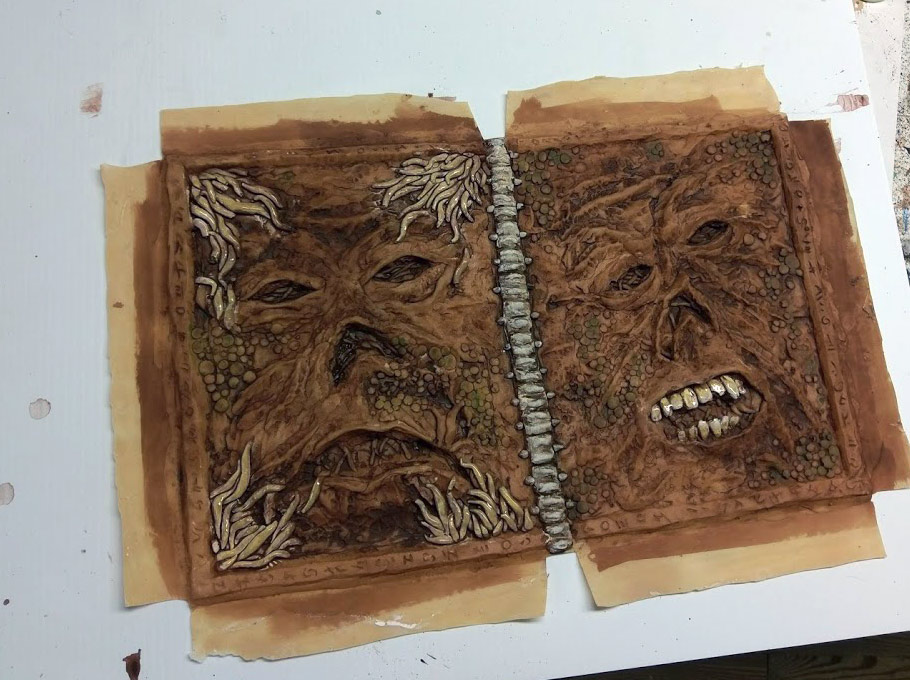
Final book:
![]()
Purchase a Necronomicon!
Aradani Costumes
Paul is painting up his own to go with his Evil Dead Ash costume.
What is the Necronomicon?
From Wikipedia:
The Necronomicon is a fictional grimoire (textbook of magic) appearing in the stories by horror writer H. P. Lovecraft and his followers. It was first mentioned in Lovecraft’s 1924 short story “The Hound”, written in 1922, though its purported author, the “Mad Arab” Abdul Alhazred, had been quoted a year earlier in Lovecraft’s “The Nameless City”. Among other things, the work contains an account of the Old Ones, their history, and the means for summoning them.
Other authors such as August Derleth and Clark Ashton Smith also cited it in their works; Lovecraft approved, believing such common allusions built up “a background of evil verisimilitude.” Many readers have believed it to be a real work, with booksellers and librarians receiving many requests for it; pranksters have listed it in rare book catalogues, and a student smuggled a card for it into the Yale University Library’s card catalog.

